If you’re curious about the best places to visit in Oman, you’ve come to the right place.
I’ve explored everything from its rugged mountains to its pristine coastline.
From the majestic dunes of Wahiba Sands to the historic forts of Nizwa and the beaches of Muscat, Oman is a unique and exciting destination.
Whether you’re looking for adventure, history, or simply a quiet place to take it all in, Oman offers a little bit of everything.
Let me share some of the highlights from my journey.
Table of Contents
Toggle- 1. Muscat
- 2. Nizwa
- 3. Jebel Akhdar
- 4. Wahiba Sands
- 5. Sur
- 6. Ras Al Jinz
- 7. Wadi Shab
- 8. Bahla
- 9. Bimmah Sinkhole
- 10. Masirah Island
- 11. Jebel Shams
- 12. Salalah
- 13. Wadi Bani Khalid
- 14. Al Hoota Cave
- 15. Rustaq
- 16. Al Ayn and Bat Tombs
- 17. Wadi Tiwi
- 18. Khasab
- 19. Quriyat
- FAQs
- When is the best time to visit Oman?
- Do I need a visa to visit Oman?
- What’s the best way to travel around Oman?
- Is Oman safe for solo travellers?
- What currency is used in Oman?
- Final Thoughts
Need help planning your next trip? Hire me as your Personal Travel Planner!
1. Muscat
Muscat, Oman’s capital, is a captivating blend of traditional Omani culture and modern comforts. With its mix of ancient heritage and contemporary development, it’s a perfect introduction to Oman.
Sultan Qaboos Grand Mosque took my breath away with its intricate mosaics and serene prayer hall. You’ll also find the second-largest handmade Persian carpet in the world here.

Mutrah Corniche, located along Muscat’s waterfront, offers stunning views of the harbour, mountains, and traditional Omani architecture. It’s a scenic spot for an evening stroll and a glimpse into local life.
The Fish Market is a lively part of the corniche, where you can watch fishermen bringing in their daily catch.
Nearby, Mutrah is one of Oman’s oldest markets. Here, you’ll find everything from spices and textiles to jewellery. It’s an excellent place for souvenir shopping and practising your bartering skills.
My favourite part was wandering through the tiny alleys, picking up frankincense and chatting with friendly stall owners.
Mutrah Fort, perched on a hill overlooking the corniche, offers panoramic views of the coastline. Visit in the early evening to enjoy the sunset over the harbour.
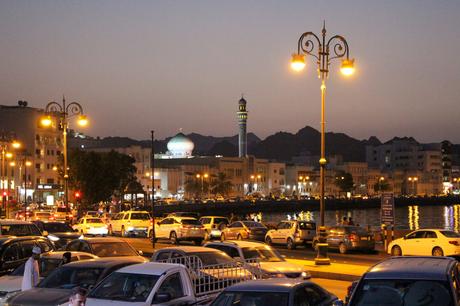
For a taste of modern Muscat, check out the Royal Opera House. Housed inside an enormous palatial complex, it often hosts international performances.
You can also tour the opulent interiors even if you’re not catching a show.
Winter (November to March) is the most comfortable time of year for exploring Muscat – and the rest of Oman.
Remember to dress modestly at religious sites and give yourself enough time to soak up Muscat’s cultural highlights. I’d recommend spending at least 2 days here, ideally 3.
2. Nizwa
Nizwa was once the capital of Oman. Known for its impressive fort and bustling souq, it’s a cultural hub rich in history and tradition.
Nizwa Fort is the city’s most iconic landmark. Built in the 17th century, this imposing fortress features a massive circular tower and offers panoramic views of the surrounding oasis and mountains.

Nizwa Souq is one of Oman’s best markets. Here, you’ll find everything from fresh produce and silver jewellery to pottery and spices.
Visit on a Friday morning to witness the traditional goat market, where locals gather to buy and sell livestock.
3. Jebel Akhdar
Jebel Akhdar, also known as the “Green Mountain,” is one of Oman’s most scenic destinations, famous for its terraced farms, rose gardens, and cooler climate.
It’s a refreshing escape from the desert heat and offers beautiful views.
Hiking trails wind through the mountain, taking you past local farms, pomegranate orchards, and stunning cliffside viewpoints.
In spring, Jebel Akhdar is especially enchanting, as the rose terraces bloom with fragrant pink flowers. Locals harvest these roses to produce rose water, a traditional Omani product.
To reach Jebel Akhdar, you’ll need a 4×4 vehicle due to steep and winding roads. The drive itself is scenic, with breathtaking vistas around each bend.
4. Wahiba Sands
Wahiba Sands is where I truly felt the spirit of Oman’s desert. It’s a place of shifting golden dunes that seem to go on forever.
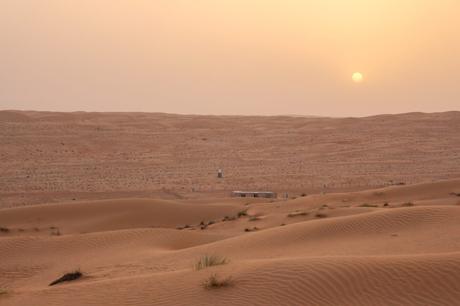
A guided safari helps you learn about Bedouin customs and navigate the desert safely. You can go dune-bashing in a 4×4 or hop on a camel for a slower journey across the sand.
I highly recommend spending a night in a desert camp. You’ll stay in traditional Bedouin tents, enjoy hearty local meals, and the most incredible star-filled skies.
I stayed at Desert Wonders Camp – one of the cheaper options – which was fantastic.
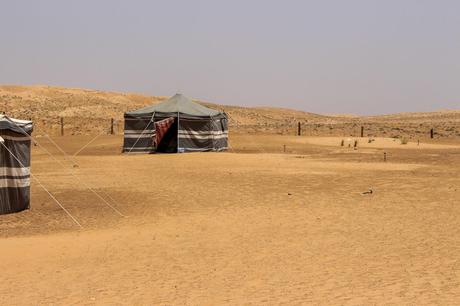
If your budget allows, Desert Nights Camp is one of the best luxury desert camps in Oman.
5. Sur
Sur sits on Oman’s eastern coast and remains proud of its maritime past. I came here to see the famous dhow-building yards and ended up spending an extra day exploring the unspoilt shoreline.
One of the main attractions is the Dhow Factory, where you can see skilled craftsmen building dhows using methods passed down through generations.
It’s fascinating to see them shape the wood and piece together these iconic vessels by hand.
Al Ayjah Lighthouse, perched on a hill across the bay, offers fantastic views of the city and harbour. It’s especially beautiful at sunset, when the light casts a warm glow over the water.
6. Ras Al Jinz
If you love wildlife, Ras Al Jinz Turtle Reserve is located close to Sur. It’s a coastal reserve that’s an important nesting site for green turtles.
The reserve offers guided turtle-watching tours, typically in the evening or early morning when the turtles come ashore to lay their eggs.
These tours are conducted responsibly to minimize disturbance to the turtles.
The Ras Al Jinz Visitor Center provides informative exhibits on the life cycle of sea turtles, their conservation, and the significance of this protected area.
May to October is the peak nesting season, with higher chances of seeing turtles. Try to book your tour in advance if possible.
Pack an extra layer – it can get surprisingly chilly in the early hours. Please do follow all guidelines to ensure a respectful and eco-friendly experience.
7. Wadi Shab
Wadi Shab is a breathtaking canyon home to turquoise pools, cascading waterfalls, and scenic hiking trails.
First, you need to take a short boat ride to cross the river from the parking lot (bring cash for this).
Then, the hike into Wadi Shab takes you along a rocky path, passing date palms and dramatic cliffs. After a short walk, you’ll reach the wadi’s famous pools, where you can cool off with a refreshing swim.
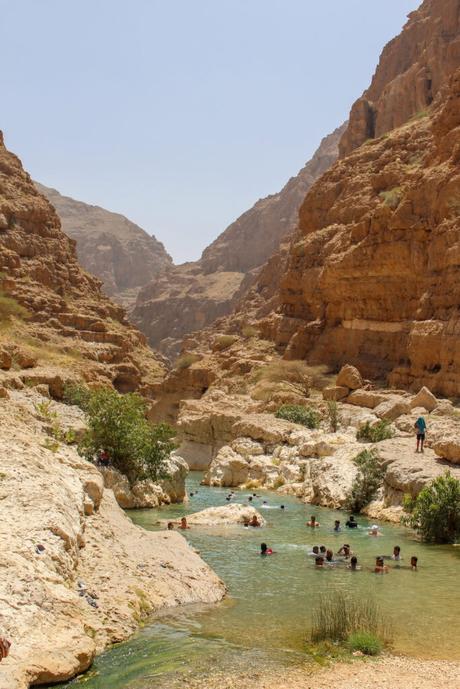
At the far side of the pool there’s a hidden waterfall inside a cave. Ask one of the locals if you can’t find it.
Despite being one of Oman’s most popular wadis, to me, the entire experience felt like discovering a natural oasis.
Wear sturdy shoes for the hike and bring swimwear, plus a few Rials for the boat. (When I visited, it was 1 Rial per person for a return trip.)
8. Bahla
Bahla Fort, one of Oman’s oldest forts, is an impressive structure with high walls and intricate architecture. Climbing to the top rewards you with sweeping views over the surrounding oasis and town.
The town is also famous for its traditional pottery. Visiting a pottery shop offers a chance to see artisans at work, creating beautifully crafted pots and decorative pieces.
Nearby, Jabreen Castle is another fascinating site. This well-preserved castle is known for its detailed ceilings and traditional Omani design.
9. Bimmah Sinkhole
Bimmah Sinkhole is a natural limestone crater filled with turquoise-blue water, making it one of Oman’s most unique and photogenic spots. It’s a popular place to swim and enjoy the refreshing water in a beautiful setting.
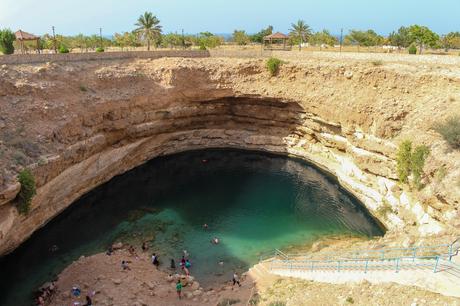
The sinkhole’s clear, cool water invites you to take a dip, and some adventurous visitors even try cliff jumping from the sinkhole’s edges. The water’s vivid colour contrasts beautifully with the surrounding rocky landscape.
Located in Hawiyat Najm Park, the sinkhole is easy to access and has picnic facilities nearby, making it a great spot for a family outing or a leisurely afternoon.
Winter and spring are ideal for visiting, as temperatures are cooler and more comfortable for outdoor activities. Bring swimwear and enjoy a refreshing break in this natural wonder.
10. Masirah Island
Masirah Island is a remote paradise with pristine beaches, abundant marine life, and a laid-back vibe.
The island is popular for kite surfing, with consistent winds and open beaches.
Masirah is also a significant nesting site for turtles. Certain beaches on the island provide the chance to spot these creatures, especially during the nesting season which runs from May to September.
It’s a fairly remote location with limited facilities. Pack essentials and enjoy the island’s tranquil, untouched beauty.
11. Jebel Shams
Jebel Shams, Oman’s highest mountain, offers dramatic landscapes and breathtaking views of the “Grand Canyon of Oman.”
It’s a fantastic destination for hikers and nature lovers.
The Balcony Walk is one of the most popular trails on Jebel Shams. This trail hugs the cliffside, offering incredible views of the canyon below and leading to abandoned villages along the way.
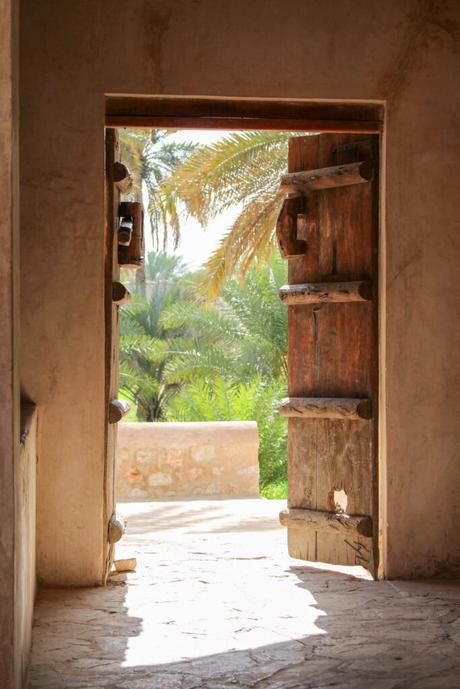
For those interested in camping, Jebel Shams provides several scenic spots where you can set up tents and enjoy a night under the stars.
A 4×4 vehicle is recommended for reaching the mountain’s higher elevations, as the dirt roads are fairly steep and rocky in places.
12. Salalah
Salalah in southern Oman feels like another world compared to the rest of the country. Especially if you visit during Khareef, the monsoon season, when rain transforms the region into lush greenery.
Al Mughsail Beach is one of Salalah’s beautiful coastal spots, with white sand and dramatic cliffs.
Wadi Darbat, a lush valley with waterfalls and greenery, is another must-see during the Khareef season. The area comes alive with vegetation, making it ideal for picnics and leisurely strolls.
For history enthusiasts, the ruins of Sumhuram offer insight into Oman’s ancient trading past. This archaeological site overlooks a lagoon and is thought to have been a major port in the frankincense trade.
Visit Salalah during Khareef (June to September) for the green landscapes or in winter for drier, pleasant weather.
13. Wadi Bani Khalid
Wadi Bani Khalid is another beautiful wadi, with clear blue pools, palm-fringed surroundings, and stunning desert scenery.

The wadi’s natural pools are ideal for swimming, offering a refreshing break in the middle of the desert. The water is crystal clear.
Muqal Cave, located within the wadi, adds an adventurous element. You can explore its dark chambers with a flashlight, experiencing a natural wonder hidden away in the canyon.
Picnic spots are scattered around the wadi, shaded by palm trees.
14. Al Hoota Cave
Al Hoota Cave is a natural wonder with an extensive underground system of rock formations and underground lakes.
Guided tours take you through the cave’s chambers, where you’ll see stalactites, stalagmites, and unique mineral formations created over thousands of years.
One of the cave’s highlights is its underground lake, home to a rare species of blind fish that’s adapted to life in complete darkness.
A small train takes you to the cave entrance, which is quite fun. The Al Hoota Cave Visitor Center also offers geological exhibits for a deeper understanding of the cave’s history.
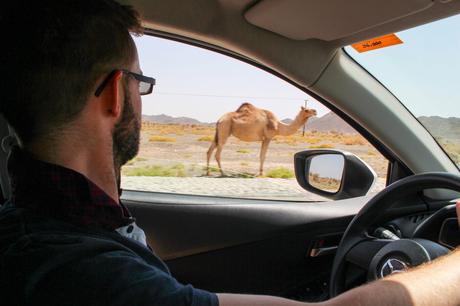
15. Rustaq
Rustaq is a historic town known for its hot springs, ancient forts, and traditional Omani charm. It’s a wonderful destination to experience Oman’s heritage and enjoy some natural relaxation.
Rustaq Fort is a major highlight, with its impressive architecture and panoramic views of the surrounding area. The fort’s towers and courtyards showcase Oman’s traditional defensive structures.
Ain Al Kasfa hot springs, located nearby, offer a soothing spot to relax in naturally heated water. The springs are popular among locals and tourists looking for a therapeutic experience.
Rustaq is also a great base for hiking in the nearby mountains, providing beautiful views and opportunities to explore rural Oman.
Winter is the best time to visit Rustaq for mild weather, and don’t forget to bring a bathing suit for the hot springs. This town combines history, nature, and relaxation in a picturesque setting.
16. Al Ayn and Bat Tombs
The Al Ayn and Bat Tombs are UNESCO World Heritage sites, featuring ancient beehive tombs that date back to the 3rd millennium BCE. These unique archaeological sites offer a fascinating look into Oman’s prehistoric past.
The tombs are scattered across rocky hillsides, with each structure crafted from stone blocks stacked in a distinct beehive shape. They stand as a testament to the ancient communities that once inhabited this region.
Exploring the area feels like stepping back in time, as you wander through these well-preserved tombs and admire the surrounding mountain views. The peaceful landscape adds to the sense of mystery and history.
A guide can be helpful for understanding the tombs’ significance and learning about the ancient societies that built them.
Winter is the ideal season for visiting, as the weather is cooler. This site is perfect for those interested in archaeology and Oman’s deep history.
17. Wadi Tiwi
Wadi Tiwi is a picturesque canyon lined with emerald-green pools, towering cliffs, and palm groves. Known for its scenic beauty, it’s a popular spot for hiking, swimming, and exploring traditional villages.
As you make your way through the wadi, you’ll pass several small villages with terraced farms. The lush vegetation and water pools create a striking contrast against the rocky cliffs.
Swimming in the wadi’s clear pools is a refreshing experience, especially after hiking along the rugged trails. It’s a serene and scenic place to unwind.
A 4×4 vehicle is recommended to access the deeper sections of Wadi Tiwi, as the terrain can be challenging.
Visit in winter for comfortable temperatures. Bring sturdy shoes and swimwear.
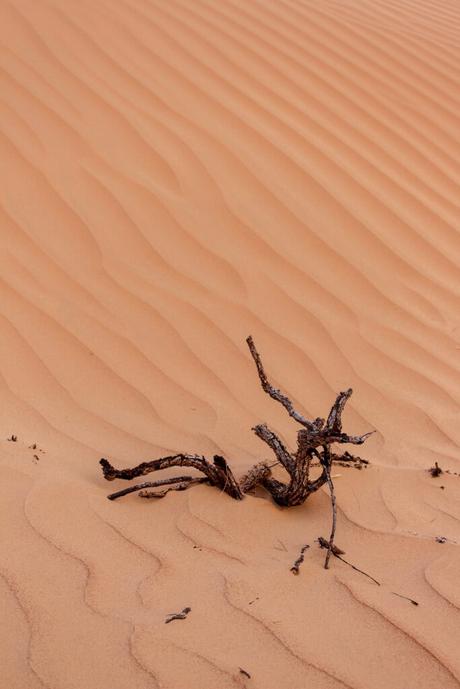
18. Khasab
Khasab is often called the “Norway of Arabia” because of its fjord-like landscapes and rich marine life.
Located in northern Oman’s Musandam Peninsula, it’s a fantastic destination offering breathtaking coastal scenery and plenty of adventure.
A dhow cruise is a must-do activity in Khasab. You’ll sail through the dramatic fjords on a traditional wooden boat and spot dolphins playing in the waters.
Snorkelling and diving are popular here too, thanks to the clear waters and colourful marine life.
Book dhow cruises in advance to make the most of your time in this unique part of Oman.
19. Quriyat
Quriyat is a coastal town with a rich fishing tradition, scenic harbour, and historical forts.
It’s a great day trip from Muscat, offering a glimpse into traditional Omani life.
Quriyat Fort, located near the harbour, is one of the town’s key attractions. Its distinctive architecture and historical significance make it well worth a visit. And the views over the surrounding landscape from the top are great too.
The harbour area is filled with fishing boats. If you get there early, you’ll see fishermen returning with their catch.
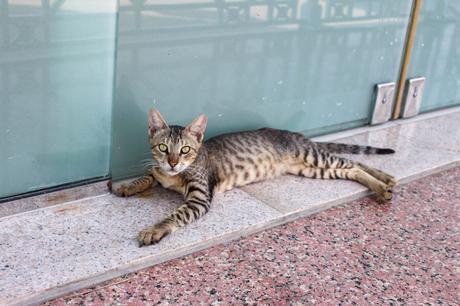
FAQs
When is the best time to visit Oman?
The best time to visit Oman is during winter, from November to March, when temperatures are mild and comfortable for outdoor activities. This season is ideal for exploring Oman’s desert landscapes, wadis, and mountains without the intense summer heat.
Do I need a visa to visit Oman?
Many nationalities need an e-visa to enter Oman, which can be obtained online before arrival. It’s important to check the latest visa requirements for your country, as entry policies can vary.
What’s the best way to travel around Oman?
Renting a car is the most convenient way to travel around Oman, especially for reaching remote areas like Jebel Shams and Wahiba Sands. A 4×4 vehicle is recommended for mountainous and desert regions to ensure safe access.
Is Oman safe for solo travellers?
Oman is generally very safe for solo travellers, with low crime rates and friendly locals. Basic precautions are recommended, particularly in remote areas, to ensure a smooth and enjoyable experience.
What currency is used in Oman?
The currency used in Oman is the Omani Rial (OMR). ATMs are widely available in cities, but carrying cash is advisable when visiting rural areas, where card payments may be limited.
Final Thoughts
Oman is an incredible country to explore, offering everything from ancient fortresses and bustling souqs to breathtaking deserts, wadis, and mountain landscapes.
Check out some of my other posts on Oman and let me help you plan an unforgettable trip!

